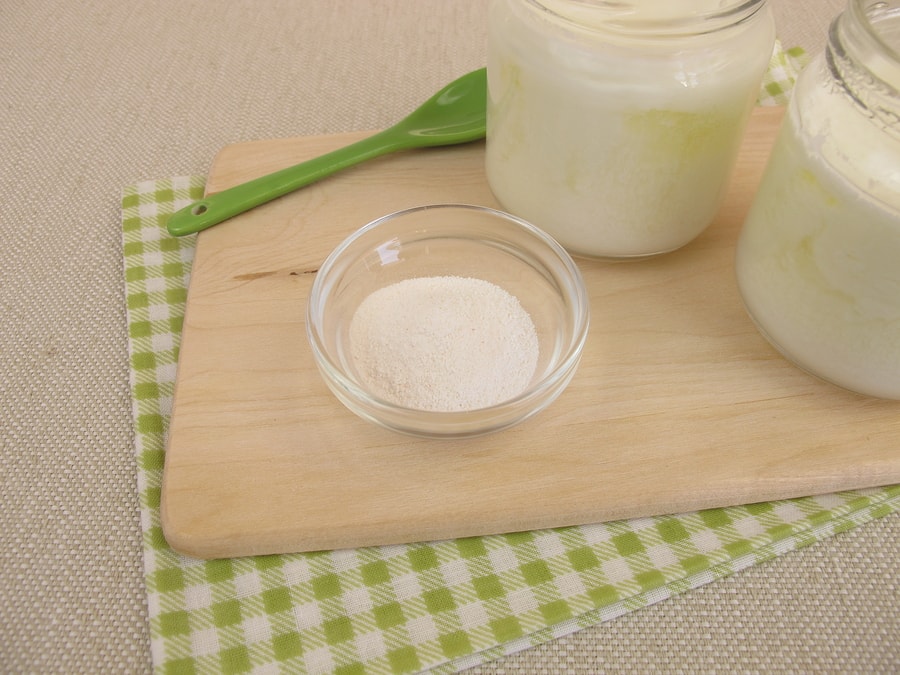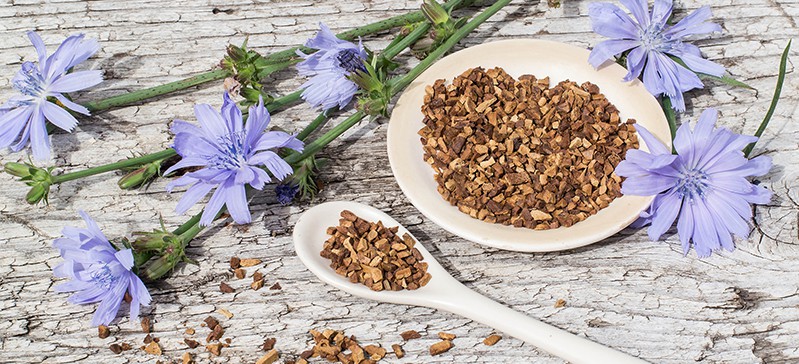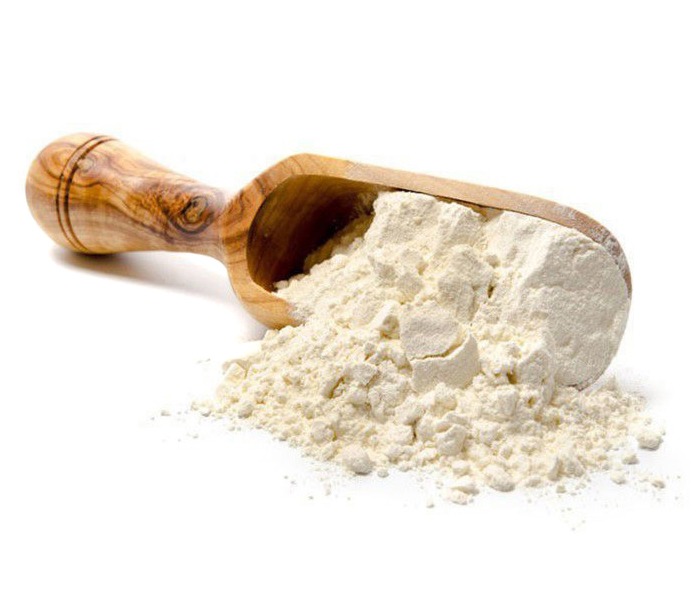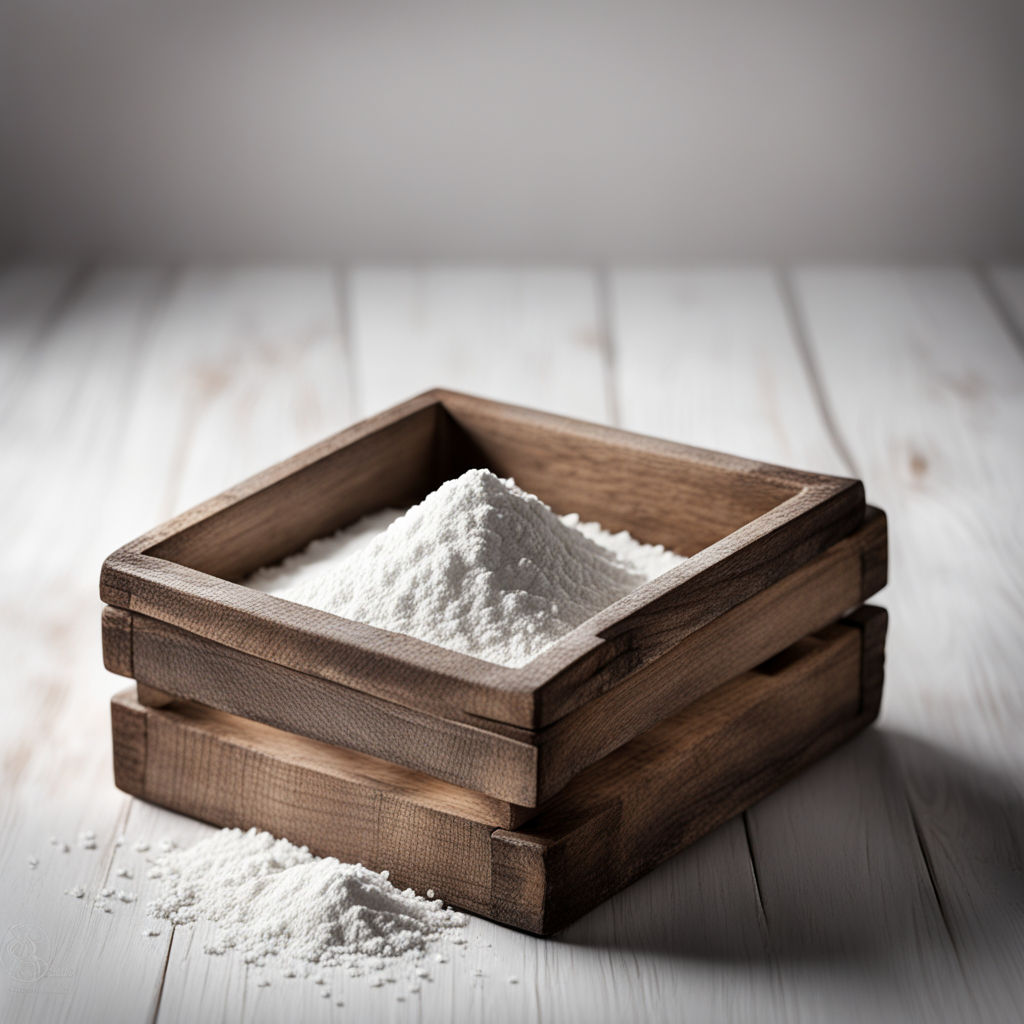Introduction

Dietary fibers are an essential component of a healthy diet, known for their numerous benefits to digestive health. They are primarily found in plant-based foods and come in two main types: soluble and insoluble fibers. Soluble fibers dissolve in water to form a gel-like substance, aiding in the regulation of blood sugar levels and cholesterol. Insoluble fibers, on the other hand, add bulk to stool and help prevent constipation by facilitating the movement of food through the digestive tract.
A diet rich in fiber is linked to a lower risk of chronic diseases such as heart disease, diabetes, and certain types of cancer. The recommended daily intake of fiber varies by age and gender, but it generally ranges from 25 to 38 grams per day for adults. Foods high in dietary fiber include fruits, vegetables, whole grains, legumes, nuts, and seeds. Learn more about dietary fibers at Harvard T.H. Chan School of Public Health.
Introduction to Inulin Fiber

Inulin is a type of soluble fiber that has garnered attention for its unique health benefits. Unlike some other fibers, inulin is not digested in the stomach or small intestine. Instead, it travels to the colon, where it acts as a prebiotic, serving as food for beneficial bacteria. This process helps improve gut health by enhancing the growth and activity of these good bacteria.
Naturally occurring in various plants, inulin can be found in high concentrations in foods such as chicory root, Jerusalem artichoke, garlic, onions, and leeks. It is often extracted and added to processed foods, beverages, and dietary supplements to boost fiber content.
The health benefits of inulin extend beyond digestive health. It has been shown to help regulate blood sugar levels, making it beneficial for individuals with diabetes. Inulin also promotes feelings of fullness, which can aid in weight management by reducing overall calorie intake. Detailed overview of inulin fiber can be found at Springer Link.
What is Inulin?
Inulin is a type of soluble dietary fiber classified as a fructan, which is a polymer composed of fructose molecules. Unlike some other fibers, inulin is not digested in the stomach or small intestine. Instead, it reaches the colon intact, where it serves as a food source for beneficial bacteria, thus acting as a prebiotic. This makes inulin particularly valuable for promoting gut health and improving the balance of the gut microbiota.
Chemically, inulin is composed of a chain of fructose molecules linked together by β-(2→1) glycosidic bonds, typically ending with a glucose molecule. The number of fructose units can vary, resulting in inulins of different molecular weights. This variation influences its functional properties, such as solubility and fermentability. Inulin is water-soluble, forming a gel-like substance when mixed with water. This property makes it useful in food production, where it can be used to modify texture, stabilize emulsions, and improve the mouthfeel of low-fat products. Additionally, because it is not broken down by human digestive enzymes, inulin has a minimal impact on blood sugar levels, making it suitable for people with diabetes.
Natural Sources of Inulin

Inulin is naturally found in a variety of plant-based foods. Some of the richest sources include:
- Chicory Root: Often used for commercial extraction of inulin.
- Jerusalem Artichoke: Known for its high inulin content.
- Garlic: A common kitchen staple that also provides inulin.
- Onions: Widely consumed and a good source of inulin.
- Leeks: Another member of the allium family rich in inulin.
- Asparagus: Contains moderate amounts of inulin.
- Bananas: Particularly when slightly green, they contain inulin.
Incorporating these foods into your diet can help boost your inulin intake naturally, promoting better digestive health and other associated benefits. Discover more about inulin sources at Berkeley Wellness.
Health Benefits of Inulin Fiber
Digestive Health
Prebiotic Effects: Inulin is widely recognized for its prebiotic properties. As a prebiotic, inulin serves as a food source for beneficial gut bacteria, particularly Bifidobacteria and Lactobacilli. These bacteria ferment inulin, producing short-chain fatty acids (SCFAs) such as butyrate, acetate, and propionate. These SCFAs lower the pH of the colon, creating an environment that inhibits the growth of harmful pathogens and promotes the proliferation of beneficial microbes.
Improvement of Gut Microbiota: The fermentation of inulin in the gut leads to an increase in beneficial bacteria, which can help balance the gut microbiota. A healthy gut microbiota is essential for numerous bodily functions, including the production of vitamins, the maintenance of the gut barrier, and the modulation of the immune system. Improved gut health can also alleviate symptoms of digestive disorders such as irritable bowel syndrome (IBS) and constipation.
For more on the impact of inulin on gut health, see NCBI’s article on inulin and gut microbiota.
Blood Sugar Control
Impact on Glucose Metabolism: Inulin has a minimal impact on blood glucose levels because it is not digested by human enzymes. This characteristic makes it a suitable fiber for individuals looking to manage their blood sugar levels. When consumed, inulin slows down the absorption of carbohydrates, leading to more gradual increases in blood glucose and insulin levels. This can help in stabilizing blood sugar levels, particularly beneficial for individuals with type 2 diabetes.
Benefits for Diabetics: The ability of inulin to improve blood sugar control makes it particularly advantageous for people with diabetes. By promoting better blood sugar management, inulin can help reduce the risk of complications associated with diabetes, such as cardiovascular disease. Additionally, the prebiotic effects of inulin may support overall metabolic health, which is often compromised in diabetic patients.
Weight Management
Satiety and Appetite Control: Inulin can help with weight management by promoting feelings of fullness. When inulin is consumed, it absorbs water and expands in the stomach, creating a sensation of fullness. This can help reduce overall calorie intake by curbing appetite and reducing the tendency to snack between meals. Additionally, the fermentation process in the gut produces SCFAs, which may influence hormones related to hunger and satiety.
Role in Weight Loss: By enhancing satiety and reducing caloric intake, inulin can support weight loss efforts. Studies have shown that individuals consuming inulin tend to have a lower body weight and reduced body fat over time. The prebiotic effects also contribute to improved metabolic health, which can further support weight management.
Bone Health

Enhancement of Calcium Absorption: One of the lesser-known benefits of inulin is its ability to enhance calcium absorption in the gut. The fermentation of inulin in the colon produces SCFAs, which lower the pH of the gut. This acidic environment increases the solubility of minerals like calcium, making them easier to absorb. Improved calcium absorption is crucial for maintaining bone density and preventing bone-related diseases.
Prevention of Osteoporosis: By enhancing calcium absorption, inulin can play a role in preventing osteoporosis, a condition characterized by weak and brittle bones. Adequate calcium intake, supported by inulin supplementation, can help maintain strong bones and reduce the risk of fractures, especially in postmenopausal women and older adults.
Food Sources of Inulin
Vegetables High in Inulin: Several vegetables are naturally rich in inulin, making them excellent sources of prebiotic fiber. These include:
- Chicory Root: Perhaps the most concentrated natural source of inulin, chicory root is often used for commercial inulin extraction. It can be consumed as a vegetable or used to make chicory coffee.
- Jerusalem Artichoke: Also known as sunchokes, Jerusalem artichokes have a nutty flavor and are versatile in cooking. They can be roasted, sautéed, or used in soups.
- Garlic: A staple in many cuisines, garlic not only enhances flavor but also provides a significant amount of inulin. It can be used in various dishes, from sauces to marinades.
- Onions: Commonly used in everyday cooking, onions are another good source of inulin. They can be eaten raw in salads, cooked in stews, or caramelized for a sweet addition to many dishes.
- Leeks: Related to onions and garlic, leeks offer a milder flavor and a good amount of inulin. They are excellent in soups, casseroles, and as a side dish.
- Asparagus: This spring vegetable is not only delicious but also rich in inulin. It can be grilled, roasted, or added to salads and stir-fries.
- Bananas: Particularly when slightly green, bananas contain inulin. They are a convenient snack and can be used in smoothies and baking.
Inulin-Enriched Foods and Supplements

In addition to natural sources, inulin is often added to various foods and supplements to boost fiber intake. These include:
- Processed Foods: Inulin is commonly added to cereals, snack bars, yogurt, and bread to increase their fiber content. Look for labels that mention “inulin” or “chicory root fiber.”
- Dietary Supplements: Inulin supplements are available in powder or capsule form. They are an easy way to increase your prebiotic fiber intake, especially if your diet lacks sufficient inulin-rich foods.
Boosting your inulin intake can be simple with a few dietary adjustments. Here are some tips for incorporating this prebiotic fiber into your daily eating habits:
- Add Inulin-Rich Vegetables to Meals: Include garlic and onions in your cooking regularly. Roast Jerusalem artichokes or leeks as a side dish. Use chicory root in salads or as a coffee substitute.
- Choose Inulin-Enriched Products: Opt for cereals, breads, and snack bars that list inulin or chicory root fiber as an ingredient. These products can help you reach your daily fiber goals.
- Use Inulin Supplements: If you find it challenging to get enough inulin from food alone, consider adding an inulin supplement to your diet. Follow the recommended dosage on the packaging.
- Experiment with Recipes: Incorporate inulin-rich foods into your favorite recipes. For example, add sliced asparagus to your stir-fry, or blend a slightly green banana into your smoothie for an extra fiber boost.
- Read Food Labels: When grocery shopping, check food labels for inulin or chicory root fiber. This can help you make more informed choices to increase your fiber intake.
Potential Side Effects and Precautions
Common Side Effects: While inulin offers numerous health benefits, it can also cause some side effects, especially when consumed in large amounts or when introduced suddenly into the diet. Common side effects include:
- Bloating: Inulin fermentation in the gut can produce gas, leading to bloating. This is often experienced when starting to consume inulin or when consuming high doses.
- Gas: The production of gas during the fermentation process can cause discomfort and flatulence.
- Abdominal Discomfort: Some individuals may experience stomach cramps or general discomfort as their digestive system adjusts to increased fiber intake.
These side effects are usually mild and tend to diminish as the body becomes accustomed to higher fiber levels. To minimize these effects, it is advisable to start with a small amount of inulin and gradually increase the dosage.
Recommended Dosages
The appropriate dosage of inulin can vary depending on individual health goals and tolerance levels. General guidelines for inulin intake are:
- Starting Dose: Begin with a small dose, such as 2-3 grams per day, to allow your digestive system to adjust.
- Maintenance Dose: Gradually increase the dose to 5-10 grams per day over a few weeks.
- Therapeutic Dose: For specific health benefits, some studies suggest doses of up to 20 grams per day. However, higher doses should be approached with caution and potentially under medical supervision.
It’s important to listen to your body and adjust the dosage if you experience any discomfort. Drinking plenty of water can also help mitigate some of the gastrointestinal side effects.
Who Should Avoid Inulin
While inulin is generally safe for most people, certain individuals should avoid or limit its intake:
- Individuals with Irritable Bowel Syndrome (IBS): Some people with IBS may find that inulin exacerbates their symptoms, such as bloating and gas. It’s best to consult with a healthcare provider before adding inulin to the diet.
- Those with Fructose Intolerance: Inulin is a fructan, and individuals with fructose malabsorption or intolerance may experience adverse reactions when consuming inulin.
- People with Specific Allergies: Rarely, some individuals may be allergic to plants that are high in inulin, such as chicory root. Symptoms of an allergic reaction may include itching, swelling, and difficulty breathing.
How to Use Inulin in Cooking and Baking
Solubility and Texture Effects: Inulin is a versatile ingredient in the kitchen, thanks to its unique properties. It is highly soluble in water and forms a gel-like substance when mixed with liquids. This characteristic makes it an excellent ingredient for enhancing the texture and mouthfeel of various dishes. Inulin can:
- Improve Texture: Inulin can add a creamy texture to low-fat products, making it a popular ingredient in reduced-fat spreads, sauces, and dressings.
- Stabilize Emulsions: Inulin can help stabilize emulsions, ensuring that ingredients like oil and water blend smoothly and maintain a consistent texture.
- Add Bulk: When used in baking, inulin can add bulk and structure to baked goods without adding calories, making it a useful tool for creating healthier versions of your favorite recipes.
Recipes and Meal Ideas: Incorporating inulin into your cooking and baking can be both easy and rewarding. Here are some meal ideas and recipes to help you get started:
Smoothies
Add a teaspoon of inulin powder to your morning smoothie for an extra boost of prebiotic fiber. It will blend seamlessly with fruits, vegetables, and other smoothie ingredients, providing a creamy texture without altering the flavor.
Example Recipe:
- 1 cup of spinach
- 1 banana (preferably slightly green)
- 1/2 cup of frozen berries
- 1 tablespoon of chia seeds
- 1 teaspoon of inulin powder
- 1 cup of almond milk
Blend all ingredients until smooth.
Yogurt and Parfaits
Mix inulin powder into your yogurt or parfaits to increase the fiber content. Inulin can enhance the creaminess of yogurt, making it a delightful addition to your breakfast or snack.
Example Recipe:
- 1 cup of Greek yogurt
- 1/2 cup of granola
- 1/2 cup of mixed berries
- 1 teaspoon of inulin powder
- Drizzle of honey (optional)
Layer the yogurt, granola, and berries in a bowl or jar. Sprinkle inulin powder on top and mix well.
Baking
Inulin can be used in baking to add fiber to muffins, breads, and cookies. Replace a portion of the flour in your recipe with inulin powder to boost fiber content and improve texture.
Example Recipe: Inulin Banana Muffins
- 1 1/2 cups of whole wheat flour
- 1/2 cup of inulin powder
- 1 teaspoon of baking soda
- 1/2 teaspoon of salt
- 3 ripe bananas, mashed
- 1/3 cup of melted coconut oil
- 1/2 cup of honey or maple syrup
- 2 eggs
- 1 teaspoon of vanilla extract
Preheat the oven to 350°F (175°C). In a large bowl, combine the flour, inulin powder, baking soda, and salt. In another bowl, mix the mashed bananas, coconut oil, honey, eggs, and vanilla extract. Combine the wet and dry ingredients and mix until just combined. Pour the batter into a muffin tin and bake for 20-25 minutes, or until a toothpick inserted into the center comes out clean.
Soups and Sauces
Enhance the texture and fiber content of your soups and sauces by stirring in a small amount of inulin powder. It can thicken and add a creamy consistency without changing the flavor.
Example Recipe: Creamy Tomato Soup
- 2 tablespoons of olive oil
- 1 onion, chopped
- 2 cloves of garlic, minced
- 4 cups of chopped tomatoes (canned or fresh)
- 2 cups of vegetable broth
- 1 teaspoon of inulin powder
- Salt and pepper to taste
- Fresh basil for garnish
In a large pot, heat the olive oil over medium heat. Add the chopped onion and garlic, and sauté until soft. Add the chopped tomatoes and vegetable broth. Bring to a boil, then reduce heat and simmer for 15-20 minutes. Blend the soup until smooth using an immersion blender or regular blender. Stir in the inulin powder and season with salt and pepper. Garnish with fresh basil before serving.
